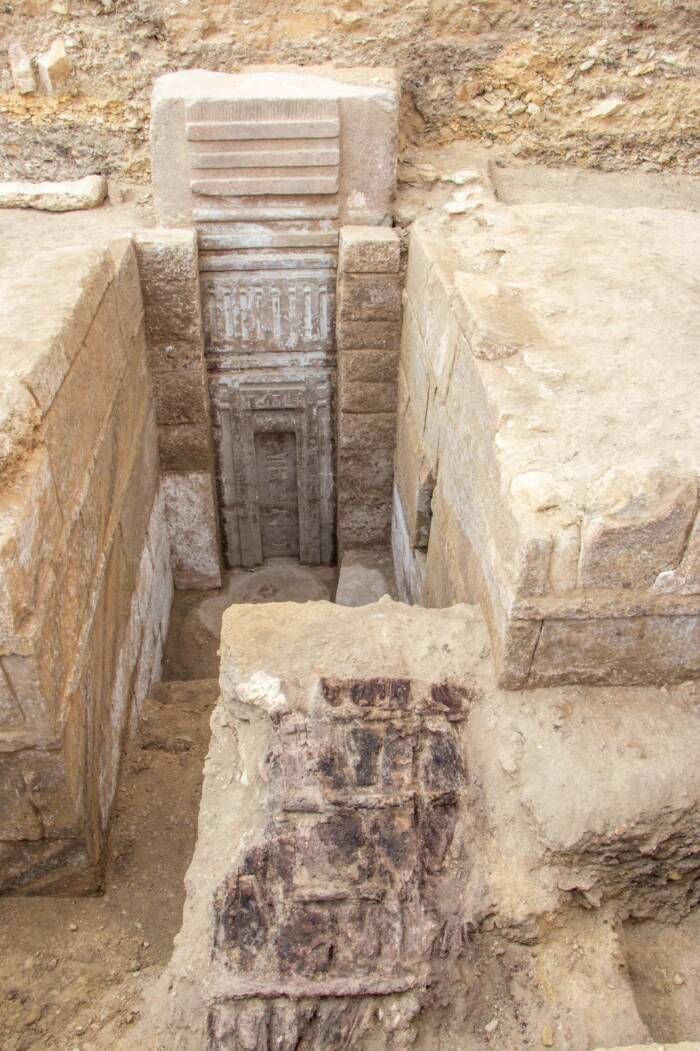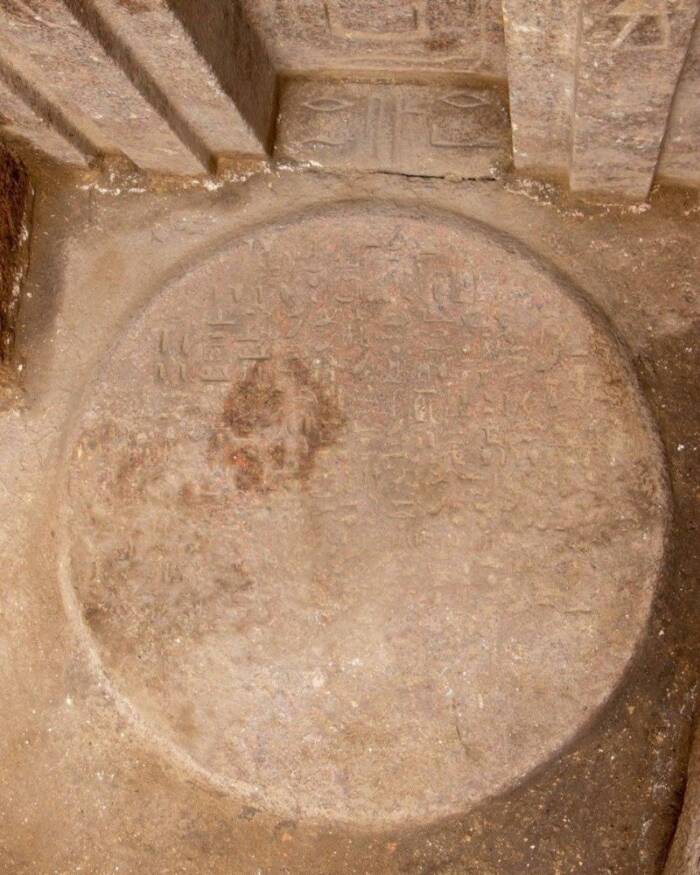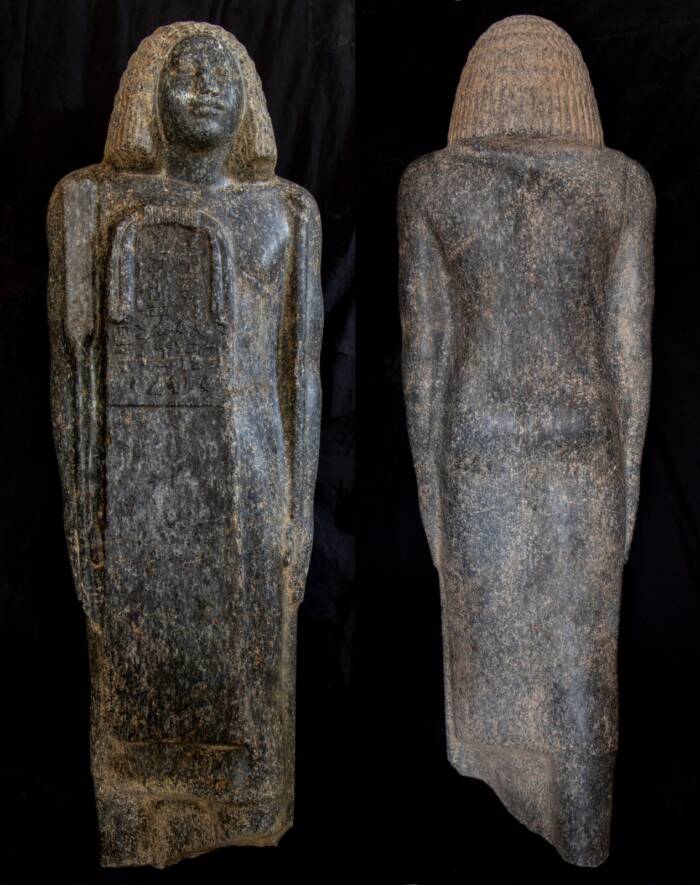While false doors were common in ancient Egyptian tombs, this one is made of rare pink granite that would have been costly to transport from Aswan, some 400 miles away.

Egyptian Ministry of Tourism and AntiquitiesThe pink granite false door of Prince Userefre’s tomb.
Archaeologists carrying out excavations at Egypt’s Saqqara necropolis recently made a discovery that offers new insights into the royal lineages of Egypt’s Old Kingdom. The tomb of Prince Userefre, the son of the pharaoh Userkaf, has been unearthed along with a false door made of rare pink granite.
The discovery came as part of a joint mission by the Supreme Council of Antiquities and the Zahi Hawass Foundation for Antiquities and Heritage.
A False Door Of Unprecedented Scale

Egyptian Ministry of Tourism and AntiquitiesA pink granite slab just outside the door would have held ritual offerings left for Prince Userefre by mourners.
Prince Userefre was the son of Userkaf, the first king of the Fifth Dynasty, who ruled for around seven years between 2465 and 2458 B.C.E. The discovery of his tomb represents one of the most significant archaeological breakthroughs at Saqqara in recent years, providing valuable new information about the religious beliefs and artistic achievements of Egypt’s Old Kingdom.
The most striking feature of Prince Userefre’s tomb is the pink granite door that hid his burial place for centuries.
At just under 15 feet tall and roughly four feet wide, it is the first of its kind found at Saqqara and the largest pink granite false door ever discovered in Egypt.

Egyptian Ministry of Tourism and AntiquitiesOne of several statues found during the excavations.
Similar, albeit smaller, false doors are a relatively common feature in Egyptian tombs. They held profound spiritual significance in ancient burial customs, serving as symbolic portals through which the deceased’s soul could travel between the world of the living and the afterlife. Typically, false doors were made of limestone, an abundant resource in ancient Egypt.
The rare and costly pink granite used to construct this newly discovered false door showcases exceptional craftsmanship and considerable resources dedicated to the prince’s eternal rest. Its imposing size also reflects Userefre’s high status within the royal hierarchy and demonstrates the Fifth Dynasty’s commitment to elaborate burial preparations for its elites.
The massive door was not the only discovery to be made at the prince’s tomb, though.
The Exceptional Artifacts Found In The Prince’s Tomb

Egyptian Ministry of Tourism and AntiquitiesA black granite statue dating back to the Third Dynasty period.
Within the tomb, archaeologists came across an impressive collection of statuary. A set of pink granite statues was found that represent King Djoser, his wife, and their children in positions of honor. Djoser ruled during the Third Dynasty, and an analysis of the statues indicated that they were created during his reign, possibly originating from the Step Pyramid he had built.
Other signs indicated that Prince Userefre’s tomb may have been reused during the 26th Dynasty (688 to 525 B.C.E.), so it is likely that these statues were relocated to the tomb around this time.
As for why they were moved, the answer is unclear. The reuse of tombs was not unheard of among later dynasties, when rulers often appropriated earlier tombs for their own burial purposes.

Egyptian Ministry of Tourism and AntiquitiesHieroglyphic inscriptions found at the tomb.
In addition to the statues of Djoser’s family, the research team found another nearly four-foot-tall black granite statue bearing inscriptions that also dates back to the Third Dynasty. Speaking to Live Science, New York University professor of Egyptology Ann Macy Roth, who was not involved with the excavations, noted the rarity of these works of art, as “there is very little sculpture from that era.”
“I can only think of one piece that represents a woman,” Roth added, emphasizing the unprecedented nature of the find.
While these discoveries that have already been announced are impressive on their own, only part of Prince Userefre’s tomb has been found — notably, not his burial chamber.
Excavations are ongoing.
After learning about the discovery of Prince Userefre’s tomb at Saqqara, read about King Tut’s tomb and the mysteries it holds. Then, discover how the Egyptian pyramids were built.





